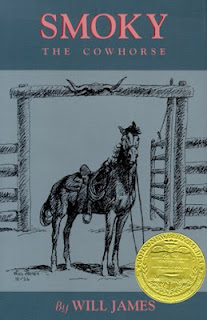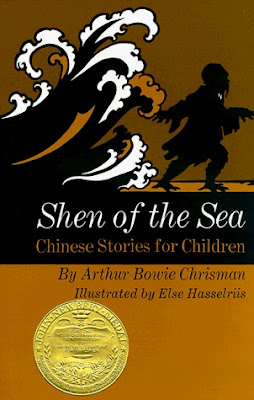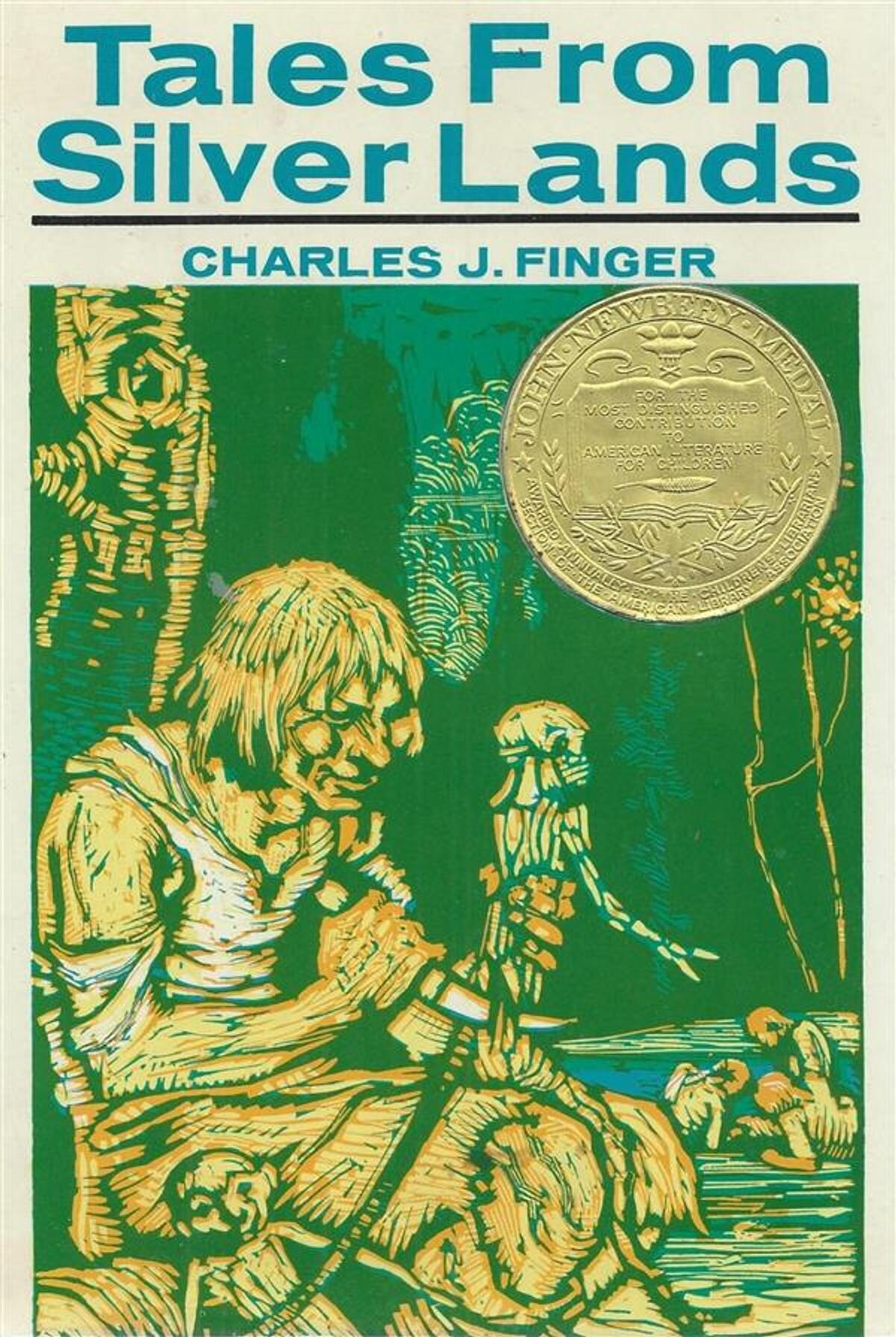

|
| ← Back to HCC Main Site |
No recognition of white privilege causes books like this to become “weird post-racial utopias ... This type of colorblind book is actively dangerous, because it risks exacerbating racial inequality.” (Olivia)
Olivia. “Storytime & Avoiding Colorblindness: Last Stop on Market Street.” Wake the Children, 6 Oct. 2017, https://wakethechildren.com/2017/10/06/storytime-colorblindness-last-stop-on-market-street/.
"The novel is aimed at 8 – 11 year olds, but the gruesome murder descriptions in the first chapter may push the age up.”
“The Graveyard Book by Neil Gaiman Book Review.” Fantasy Book Review, https://www.fantasybookreview.co.uk/Neil-Gaiman/The-Graveyard-Book.html. Accessed 23 Oct. 2023.
Contains depictions of violence, including “Despereaux's tail is cut off, and a girl's ears are boxed until she's partially deaf" (Berman).
Berman, Matt. “The Tale of Despereaux: Being the Story of a Mouse, a Princess, Some Soup, and a Spool of Thread Book Review.” Common Sense Media. https://www.commonsensemedia.org/book-reviews/the-tale-of-despereaux-being-the-story-of-a-mouse-a-princess-some-soup-and-a-spool-of. Accessed 17 Oct. 2023.
“Sachar’s world-renowned classic was banned because, when read aloud in class, it caused an uproar among parents. They thought it was an inappropriate book for nine-year-olds” (Agnes Robinson Waterloo Public Library).
Agnes Robinson Waterloo Public Library. “What to Read: Banned Books Week 2019.” Agnes Robinson Waterloo Public Library, 13 Aug. 2019, https://waterloonepubliclibrary.com/2019/08/13/what-to-read-banned-books-week-2019/.
“May make some readers uncomfortable with its disdainful treatment of the idea of diversity,” (BookRags)
“The View from Saturday Summary.” BookRags, http://www.bookrags.com/studyguide-view-from-saturday/socialsensitivity.html. Accessed 17 Oct. 2023.
Conservative group Moms for Liberty led a successful campaign to ban the book in Williamson, Tennessee public schools because of "stick figures hanging, cursing and miscarriage, hysterectomy/stillborn and screaming during labor” (Bomar). Native American readers find Creech's portrayal of Native culture stereotypical, anachronistic, and problematic (Reese).
Bomar, Coleman. “Williamson County Schools Committee Removes Book from Elementary English Curriculum.” Williamson Herald, 28 Jan. 2022, https://www.williamsonherald.com/news/local_news/williamson-county-schools-committee-removes-book-from-elementary-english-curriculum/article_16575a86-8066-11ec-8691-b7c02ce14808.html.
Reese, Debbie. “Thoughts on Sharon Creech’s WALK TWO MOONS.” American Indians in Children’s Literature (AICL), 25 Feb. 2010, https://americanindiansinchildrensliterature.blogspot.com/2010/02/thoughts-on-sharon-creechs-walk-two.html.
Reese, Debbie. “Claims to Native Identity in Children’s Literature.” American Indian Culture and Research Journal, no. 4, 2019. EBSCOhost, search.ebscohost.com/login.aspx?direct=true&db=edssch&AN=edssch.oai%3aescholarship.org%3aark%3a%2f13030%2fqt5m13d31f&site=eds-live&scope=site.
Frequently challenged and/or banned due to "violence, particularly infanticide (ill babies are euthanized in the book), as well as sexual references and suicide" (Diamond).
Diamond, Rebecca. “Banned Books as a Parenting Tool: Lessons from The Giver.” Books We Read. 28 Sept. 2021, https://sites.rutgers.edu/books-we-read/banned-books-as-a-parenting-tool-lessons-from-the-giver/.
The focus on Denmark only results in downplaying the horrors of the Holocaust and makes it seem to be "at worst, an inconvenience" (Adams).
Adams, Alina. “‘Number the Stars’ Does More Harm Than Good When It Comes to Holocaust Education.” Kveller, 17 Apr. 2014, https://www.kveller.com/number-the-stars-does-more-harm-than-good-when-it-comes-to-holocaust-education/.
Discussion of sex and sexual topics has given some parents pause ("Dicey's Song").
“Dicey’s Song — ‘Tillerman’ Series.” Plugged In, https://www.pluggedin.com/book-reviews/diceys-song/. Accessed 26 Oct. 2023.
Challenged on a variety of grounds, including "the use of 'Lord,' suggestions of witchcraft, and the encouragement of elaborate fantasy worlds which could 'lead to confusion'" (Karny, Grogan).
Grogan, David. “Connecticut Residents Seek to Ban Two Newbery Medal Winners from School.” The American Booksellers Association, 29 July 2002, https://www.bookweb.org/news/connecticut-residents-seek-ban-two-newbery-medal-winners-school.
Karny, Olivia. "Katherine Paterson, 'Bridge to Terabithia.'" The Banned Books Project. https://bannedbooks.library.cmu.edu/katherine-paterson-bridge-to-terabithia/. Accessed 26 Oct. 2023.
Some critics consider the book racist, stating that "it portrayed slaves unfairly, as despairing, weak people unable to fight for themselves, and, indeed, as responsible for their own enslavement" ("The Slave Dancer"). One called it "an insult to black children" (Mathis as cited in "The Slave Dancer"), and there were protests to this effect at the Newbery Award ceremony where the author accepted her prize.
“The Slave Dancer.” Encyclopedia.com, https://www.encyclopedia.com/arts/educational-magazines/slave-dancer. Accessed 26 Oct. 2023.
This book has been challenged on the grounds of violence which some have interpreted as sexual violence, "offensive language," and "being unsuited to age group" (Kate E.). The book uses the outdated and now offensive term "Eskimo" to refer to the Inupiaq/Inuit people, and Native American readers have pointed out that the white author did not have a firm grasp on the lifestyle and practices of this culture, resulting in misrepresentation (Reese).
Kate E. “Banned Book Week: Julie of the Wolves by Jean Craighead George.” A Reader’s Ramblings, 27 Sept. 2010, http://areadersramblings.blogspot.com/2010/09/banned-book-week-julie-of-wolves-by.html.
Reese, Debbie. “Not Recommended: JULIE OF THE WOLVES by Jean Craighead George.” American Indians in Children’s Literature (AICL), 13 Apr. 2020, https://americanindiansinchildrensliterature.blogspot.com/2020/04/not-recommended-julie-of-wolves-by-jean.html.
In this book about a family of African American sharecroppers written by a white man, the only named character is the dog. Some readers find this dehumanizing (Sieruta).
Sieruta, Peter D. “Collecting Children’s Books: He Does Have a Name After All.” Collecting Children’s Books, 3 Sept. 2009, http://collectingchildrensbooks.blogspot.com/2009/09/he-does-have-name.html.
Frequently challenged and even banned since its publication, A Wrinkle in Time is controversial for different and opposite reasons, depending on who reads it. Some Conservative Christians find the mixture of spirituality, science, and "witch-like" ("A Wrinkle...") female characters problematic and even heretical. Secular readers, on the other hand, are more likely to take issue with explicit positive references to Bible passages and Jesus Christ (Ku, "A Wrinkle...").
“A Wrinkle in Time: Is It Blasphemous or Too Christian?” Books on Trial – Exploring the Most Controversial Books, https://www.booksontrial.com/a-wrinkle-in-time-why-its-a-frequently-challenged-book/. Accessed 2 Nov. 2023.
Ku, Carolyn. “Madeleine L’Engle, “A Wrinkle in Time".” The Banned Books Project, https://bannedbooks.library.cmu.edu/madeleine-lengle-a-wrinkle-in-time-draft/. Accessed 2 Nov. 2023.
Set in Bible times and featuring miracle worker Jesus as a character, The Bronze Bow has been criticized for promoting Christianity over other religions, specifically Judaism, and challenged in some public school settings for its overtly religious nature. See the source below for an example of concerned parents' objections ("The Bronze Bow").
Works Cited
The Bronze Bow. https://www.bronzebow.info/BB%20FAQ%20Parents.htm. Accessed 2 Nov. 2023.
Although the main character is a Native woman, this book was authored by a white man. Inspired by an real person, the book nonetheless obscures the historical roots of the actual events by substituting the author's fantasy of Native lifestyle as well as customs from a different people group. The Aleuts (Native Alaskans) in the book are portrayed as violent and bloodthirsty (Reese).
Reese, Debbie. “A Critical Look at O’Dell’s ISLAND OF THE BLUE DOLPHINS.” American Indians in Children’s Literature (AICL), 16 June 2016, https://americanindiansinchildrensliterature.blogspot.com/2016/06/a-critical-look-at-odells-island-of.html.
Although challenged on the grounds of promoting witchcraft (Grogan), The Witch of Blackbird Pond actually contains no characters who are witches - just misunderstood women. Treatment of Native Americans is less charitable, however, with "Indians" being portrayed as frightening and savage (Schwebel).
Grogan, David. “Connecticut Residents Seek to Ban Two Newbery Medal Winners from School.” The American Booksellers Association, 29 July 2002, https://www.bookweb.org/news/connecticut-residents-seek-ban-two-newbery-medal-winners-school.
Schwebel, Sara L. “Historical Fiction and the Classroom: History and Myth in Elizabeth George Speare’s The Witch of Blackbird Pond.” Children’s Literature in Education, vol. 34, no. 3, Sept. 2003, pp. 195–218. EBSCOhost, https://doi.org/10.1023/A:1025310718928.
Some descriptions of African Americans rely on stereotypes. The author resisted changing these passages in later editions even at the request of the publisher and a concerned librarian (Willett).
Willett, Holly G. “‘Rifles for Watie’: Rollins, Riley, and Racism.” Libraries & Culture, vol. 36, no. 4, 2001, pp. 487–505. JSTOR, https://www.jstor.org/stable/25548951.
Includes now-problematic language to refer to Native Americans and Native American women in particular (Christenson).
Christenson, Tracy. “Miracles On Maple Hill.” Jestress’s Forgotten Books and Stories, 16 Dec. 2022, https://forgottenstoriesweb.wordpress.com/2022/12/16/miracles-on-maple-hill/.
Although a book written by a white Bureau of Indian Affairs educator might on first glance seem to have some representation problems, Ann Nolan Clark's work is "significant because she created books that were culturally and socially relevant to Native American readers, even though she was not Native American" (Schafer), and she translates "her sensitivity for understanding the strong cultural influence of being American Indian to understanding the strong cultural influence of being Incan" (Murnane).
Murnane, Yvonne. “Secret of the Andes by Ann Nolan Clark.” Salem Press Encyclopedia of Literature, 2023. EBSCOhost, search.ebscohost.com/login.aspx?direct=true&db=ers&AN=119622392&site=eds-live&scope=site.
Schafer, Elizabeth D. “Ann Nolan Clark.” Salem Press Biographical Encyclopedia, 2023. EBSCOhost, search.ebscohost.com/login.aspx?direct=true&db=ers&AN=89872448&site=eds-live&scope=site.
The title character is a slave who is freed and converts to Christianity. "Although Yates highlights the importance of Fortune as a historical figure, her work portrays Fortune as a somewhat docile slave character who becomes a Christian, and his professed Christianity is presented as a positive reason for slavery to exist" (Mitchell). May implicitly support an attitude of "cultural superiority...toward slavery, Africa, and Fortune’s life" (Mitchell).
Mitchell, Jessica Ann. “Amos Fortune.” Salem Press Biographical Encyclopedia, 2022. EBSCOhost, search.ebscohost.com/login.aspx?direct=true&db=ers&AN=89098424&site=eds-live&scope=site.
In keeping with the Revolutionary War timeframe in which the book is set, there are multiple depictions of violence, including a traumatic incident in which Johnny sustains a burn severe enough to prevent him from completing his silversmith apprenticeship as well as an execution Johnny witnesses ("Johnny Tremain"). Author and historian Christopher Collier also criticizes it as a "one-dimensional" representation of America's involvement in the Revolutionary War (Moir 377).
Works Cited
“Johnny Tremain.” Plugged In, https://www.pluggedin.com/book-reviews/johnny-tremain/. Accessed 15 Nov. 2023.
Moir, Hughes. “PROFILE: James and Christopher Collier—More Than Just a Good Read.” Language Arts, vol. 55, no. 3, 1978, pp. 373–78. JSTOR, http://www.jstor.org/stable/41404635. Accessed 15 Nov. 2023.
Uses dehumanizing language for Native Americans; the book is steeped in fear of "the Indians," who are represented as dangerous and terrifying (Seale 9). Ultimately, the killing of Native Americans is glorified (Sandy D.).
D., Sandy. “The Matchlock Gun.” The Newbery Project, 15 Dec. 2007, https://newberryproject.blogspot.com/2007/12/matchlock-gun.html.
Seale, Doris. “Let Us Put Our Minds Together and See What Life We Will Make for Our Children.” Through Indian Eyes: The Native Experience in Books for Children, edited by Beverly Slapin and Doris Seale, Oyate, 1998, pp. 7–12.
Another book about an indigenous character written by a white author, this book "play[s] on all the noble-savage action-adventure boy serial tropes," similar to Tarzan (Jackie B.). It also presents "sexism, bullying, and submitting to peer pressure in a positive light" (Jackie B.).
B., Jackie. “Call It Courage.” Death by Tsundoku, 7 Oct. 2017, https://deathbytsundoku.com/call-it-courage/.
 Daniel Boone by
Daniel Boone by This book, presumably chosen as an example of "literary masculinity" (Smith as cited in Clark) to counteract the "feminine ... appeal" (Newton as cited in Clark) of several prior winners, contains stereotypical imagery and descriptions of Native Americans that are liable to "offend Indigenous and modern non-indigenous sensibilities" (Clark 83). Furthermore, the historical veracity of several anecdotes is questionable since the author "doesn't distinguish between historical record and legend" (Clark 95).
Clark, Beverly Lyon. “The Most Scorned of the Newbery Medalists?: Daniel Boone (1940).” Dust Off the Gold Medal: Rediscovering Children’s Literature at the Newbery Centennial, edited by Sara L. Schwebel and Jocelyn Van Tuyl, Routledge, 2021, pp. 83–99, https://doi-org.hagcc.idm.oclc.org/10.4324/9780367337223-5-6.
Caddie and the Woodlawns' relationships with Native Americans form a large part of the story. Although Caddie is friendly with the "Indians," they are represented as "savages," and a major plot point revolves around one "brave's" scalp belt which he ultimately gifts to Caddie. These depictions of Native Americans as bloodthirsty killers drive stereotypical understandings of their culture (Reese).
Reese, Debbie. “The ‘Scalp Belt’ in CADDIE WOODLAWN.” American Indians in Children’s Literature (AICL), 6 May 2007, https://americanindiansinchildrensliterature.blogspot.com/2007/05/scalp-belt-in-caddie-woodlawn-ive-been.html.
Written by a American missionary to China, this book "never quite shakes its outsider's perspective into Chinese culture" (King). It has pro-colonial overtones as it positively represents the roles of Western missionaries and scholars ("Young Fu...") and looks down on Chinese culture in places. For example, the author refers to "poverty such as only an overpopulated Chinese city can know” (Lewis as cited in King).
King, Catherine Faris. “Decoding the Newbery: Young Fu of the Upper Yangtze, and His Fellow Apprentices.” The Book Smugglers, 11 June 2015, https://www.thebooksmugglers.com/2015/06/decoding-the-newbery-young-fu-of-the-upper-yangtze-and-his-fellow-apprentices.html.
“Young Fu of the Upper Yangtze Summary.” SuperSummary, https://supersummary-web-next-production-it5vancn7-liftventures-dev.vercel.app/young-fu-of-the-upper-yangtze/summary/. Accessed 1 Nov. 2023.
Written by a white author about Native American characters, this book has lost some luster over time. Apparently intended as a progressive (for its time), positive treatment of Native American culture, the storyline obscures historical conflicts between Native and white culture such as Indian boarding schools, to which the main character is notably not subjected (Hunt, Morey). Furthermore, the white character Big Man is idealized (Morey) and portrays "benevolent paternalism" (Hunt) which readers today may see as problematic. Even the lauded illustrations depict the Pueblo culture, not the Navajo culture supposedly represented in the story (Reese).
Hunt, Caroline C. “Waterless Mountain by Laura Adams Armer.” Salem Press Encyclopedia of Literature, 2022. EBSCOhost, search.ebscohost.com/login.aspx?direct=true&db=ers&AN=119623473&site=eds-live&scope=site.
Morey, Anne. “The Junior Literary Guild and the Making of New Canonical Works: The Case of Waterless Mountain,” Canon Constitution and Canon Change in Children’s Literature, ed. Bettina Kümmerling-Meibauer and Anja Müller (New York: Routledge, 2017), 189-204
Reese, Debbie. Comment on Sieruta, Peter D. “A Sunday Brunch with Fire and Water.” Collecting Children’s Books, 25 Mar. 2011, http://collectingchildrensbooks.blogspot.com/2011/03/sunday-brunch-with-fire-and-water.html.
The original edition contains some "archaic and problematic language" (Mercier) which a revised version has attempted to eliminate. For example, Hitty refers to Native Americans as "Injuns" (Mercier) and casts aspersions on "dirty-looking brown dolls" in India (Robison). Though the updated edition eliminates some of these difficulties, it also loses some of Hitty's self-reflection and charm (Mercier).
Mercier, Cathryn M. “Hitty Overboard.” Horn Book Magazine, vol. 76, no. 1, Jan. 2000, pp. 107–09. EBSCOhost, search.ebscohost.com/login.aspx?direct=true&db=f5h&AN=2667769&site=eds-live&scope=site.
Robison, Barton. “Hitty, Her First Hundred Years (1930).” Barton Ranks ’Em, 22 Jan. 2021, https://bartonrobison.com/barton-ranks-em/2021/1/22/hitty-her-first-hundred-years-1930.
 Smoky, the Cow Horse by
Smoky, the Cow Horse by Includes casually racist language and attitudes; for example, the unnamed villain character, who is Black and Mexican, is referred to throughout as "the halfbreed" and "the breed" (Robison) and has only negative qualities (Eddington).
Eddington, Sam. “The Winner’s Circle: Smoky, the Cowhorse, by Will James (1927).” For Those About to Mock, 10 Feb. 2012, http://abouttomock.blogspot.com/2012/02/winners-circle-smoky-cowhorse-by-will.html.
Robison, Barton. “Smoky the Cowhorse (1927).” Barton Ranks ’Em, 8 Jan. 2021, https://bartonrobison.com/barton-ranks-em/2021/1/8/smoky-the-cowhorse-1927.
 Shen of the Sea: Chinese Stories for Children by
Shen of the Sea: Chinese Stories for Children by Contrary to the title's claim, these are not authentic Chinese stories but rather inventions "in the Chinese style" (Walker). Although "Chrisman studied Chinese literature and history as a hobby, ... the closest he seems to have gotten to experiencing Chinese culture himself was talking to a Chinese storekeeper he met while travelling in California. The storekeeper may have given Chrisman some of these stories, but it's equally possible that Chrisman made them up himself" (Swan). Even the artwork (by Danish artist Else Hasselriis) reflects an outsider's interpretation of Chinese shadow play rather than actual Chinese shadow puppets (Swan).
Swan, Orange. “Chinoiserie and 1920s-Style Multiculturalism.” The Orange Swan Review, 22 July 2015, http://orangeswan.blogspot.com/2015/07/shen-of-sea.html.
Walker, Wayne S. “Shen of the Sea: Chinese Stories for Children.” Homeschool Book Review Blog, 16 June 2014, https://homeschoolbookreviewblog.wordpress.com/2014/06/15/shen-of-the-sea-chinese-stories-for-children/.
 Tales from Silver Lands by
Tales from Silver Lands by Beyond claiming authorship of folktales from a different culture (Robison), Charles Finger also had a habit of obscuring the actual sources (Winick). It seems probable that these "folktales" were not collected in the ways he specifies but rather copied from other unnamed sources or invented from whole cloth. The "creepy" (Thompson) nature of some of the tales may also make them unsuitable for younger readers.
Robison, Barton. “Tales from Silver Lands (1925).” Barton Ranks ’Em, 30 Dec. 2020, https://bartonrobison.com/barton-ranks-em/2020/12/30/tales-from-silver-lands-1925.
Thompson, Kim. “Tales from Silver Lands.” Rarest Kind of Best, 28 Jan. 2014, https://rarestkindofbest.com/2014/01/28/tales-from-silver-lands/.
Winick, Stephen. “Charles J. Finger: Gallant Rogue or Hidden Folklorist? | Folklife Today.” The Library of Congress, 18 July 2019, blogs.loc.gov/folklife/2019/07/charles-j-finger-gallant-rogue-or-hidden-folklorist.
The dialect may be difficult for readers to decipher (Claxton). Furthermore, "with the violent, sometimes gruesome aspects of the tale, The Dark Frigate may not be best placed in the hands of more sensitive, young readers “ (Claxton). Native Americans (Indians) are portrayed as violent in the story (Reese).
Claxton, B. “A Pirate’s Life Not for Everyone: Review of The Dark Frigate.” Amidst the Babble, 6 Nov. 2014, https://amidstthebabble.com/2014/11/05/a-pirates-life-not-for-everyone-review-of-the-dark-frigate/.
Reese, Debbie. “Notes: Native Imagery in Books That Have Won the Newbery Medal.” American Indians in Children’s Literature (AICL), 27 Oct. 2015, https://americanindiansinchildrensliterature.blogspot.com/2015/10/notes-native-imagery-in-books-that-have.html.
The original version is no longer available for purchase; Lofting's estate updated the depictions of Africans and indigenous people in 1988 to make them less racist and reductionist (Robison). Still contains some questionable imagery (Robison) and an "attitude of white superiority" (Thompson).
Robison, Barton. “The Voyages of Doctor Dolittle (1923).” Barton Ranks ’Em, 26 Dec. 2020, https://bartonrobison.com/barton-ranks-em/2020/12/26/the-voyages-of-doctor-doolittle.
Thompson, Kim. “The Voyages of Doctor Dolittle.” Rarest Kind of Best, 29 May 2017, https://rarestkindofbest.com/2017/05/29/the-voyages-of-doctor-dolittle/.
Though purported to be the history of all humanity, this book takes a Western Civilization perspective, focusing primarily on European culture and omitting Asian, African, and even Meso-American influences (Walker). Some of the historical information provided is now known to be erroneous (Walker). Some readers may take issue with the inclusion of evolution (Walker) and secular humanist worldview (Duffy). Recent updates and additions contain possible liberal bias (Duffy).
Duffy, Cathy. “The Story of Mankind.” Cathy Duffy Reviews, 1 Mar. 2016, https://cathyduffyreviews.com/homeschool-reviews-core-curricula/history-and-geography/world-history-core-curricula/the-story-of-mankind.
Walker, Wayne S. “The Story of Mankind.” Homeschool Book Review Blog, 9 Mar. 2017, https://homeschoolbookreviewblog.wordpress.com/2017/03/09/the-story-of-mankind/.

This work is licensed under a Creative Commons Attribution 4.0 International License.
MD Voter Registration Public Disclosure Privacy Policy Terms of Use